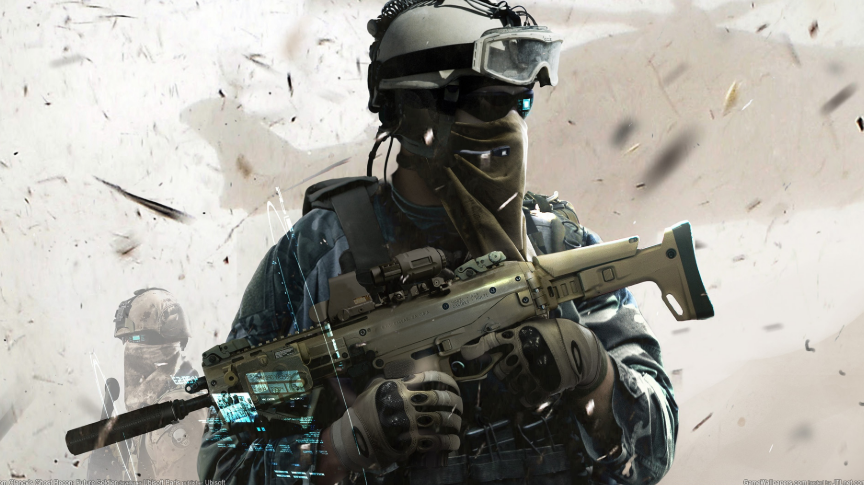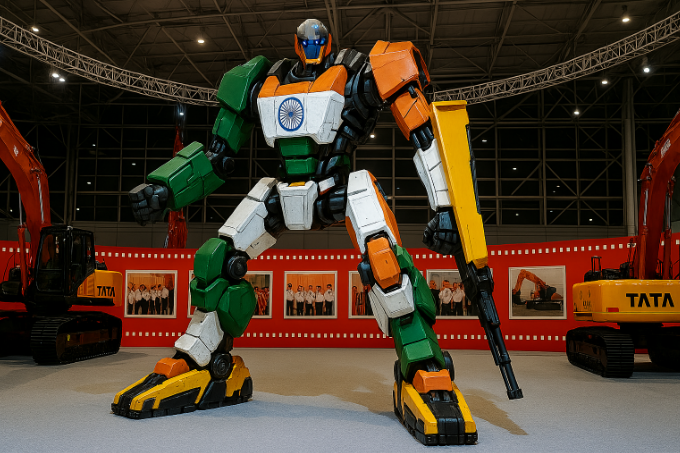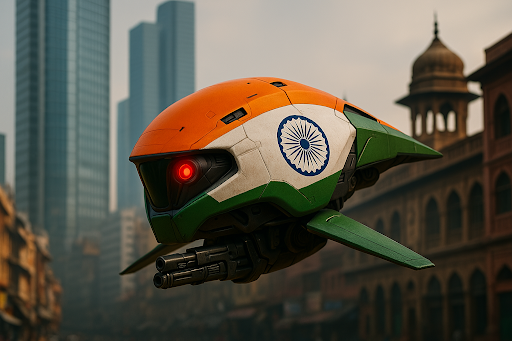With Robot Soldiers now part of our national defense roadmap, the future of warfare will undoubtedly include India’s smartest machines!
If you told someone ten years ago that India would one day deploy humanoid robots alongside its soldiers, they’d probably say that you’ve been watching too many Terminator movies. We started off the “Slaughterbots” series with our first post in 2022 which inspired a conversation that ultimately became a podcast that you can listen to here. We also wrote about Robots in Ukraine and Gaza about a year later.
Today? It’s part of our national defense roadmap. The Indian armed forces have been exploring robotics and AI to complement their boots-on-the-ground strategy for a while. From DRDO’s artificial intelligence initiatives to IITs building robots that can walk, talk, and maybe someday take fire, the future of warfare will undoubtedly include India’s smartest machines. Each one designed with a very clear goal: reduce human risk, improve efficiency, and gear up for warfare that doesn’t play by 20th-century rules.
Project Daksh and DRDO’s Future Soldier

Let’s start with something that already exists, Project Daksh. Developed by DRDO, Daksh is a remotely operated robot meant for handling hazardous objects, especially bombs and IEDs. It’s not a humanoid in the classical sci-fi sense, but it marks India’s first successful step toward robotic battlefield assistance. Daksh can climb stairs, scan suspicious packages, and even neutralize threats with its onboard water jet disruptor. That’s already miles ahead of your average bomb squad robot.
Then there’s the DRDO’s much-anticipated “Future Infantry Soldier as a System” (F-INSAS) or “Smart Soldier” program, which while primarily focused on augmenting human soldiers with next-gen tech, also includes the development of AI-enabled robotic support systems. While there isn’t a lot of information on whether that will include humanoid robots, what we do know is that they’re designed to keep soldiers safer and operations tighter.
Meanwhile, the Centre for Artificial Intelligence and Robotics (CAIR), another DRDO branch, has been testing autonomous platforms that can assist in surveillance and logistics in hostile terrain. While these aren’t humanoids either, it shows how DRDO is building the ecosystem brick by robotic brick. What’s even more interesting is how some of these platforms are designed with modularity in mind, meaning today’s logistics robot could evolve into tomorrow’s semi-autonomous battlefield assistant.
They might not be firing weapons (yet), but they are learning to read terrain, navigate without GPS, and adapt to changing conditions, all signs of a system growing smarter with every iteration.
Sanjay the MULE, and the IIT Warbots

Now let’s talk about “real humanoids,” or at least things that walk like them. Enter IIT Bombay’s “Walk Assist” robot. Designed to aid below-knee amputees by mimicking human gait, it’s a sleek piece of tech that shows just how close we’re getting to robots that can move like us. Sure, it’s a robot physiotherapist that wasn’t built for combat, but if you squint hard enough, you can see the potential.
Over at IIT Kanpur, there’s been a quiet but impressive push to build bipedal walking robots that can navigate uneven terrain. While these prototypes are still in lab stages, they hold promise for border patrol, disaster response, and urban warfare, especially in regions where wheels and treads simply won’t cut it.
Then there’s the four-legged crew, led by the Indian Army’s new robotic dog “Sanjay.” Unveiled during the Republic Day parade in Kolkata, Sanjay isn’t just a showpiece, it’s an all-weather, all-terrain machine officially classified as MULE (Multi Utility Legged Equipment). Designed for high-stakes tasks like explosives detection, surveillance, and perimeter security, Sanjay can even operate in chemical, biological, and nuclear warfare zones. It’s built for real battlefield chaos, not just demo runs on smooth pavement.
With over 100 units already inducted into various army formations, it’s clear the Indian military sees these robot dogs as more than techy mascots. And sure, they’re not humanoids, but their rugged utility is paving the way, literally, for future autonomous platforms. When robots start handling terrain this tricky, humanoids can’t be far behind.
India’s Homegrown Edge
Globally, militaries are pouring billions into humanoid robotics. The U.S. has DARPA-backed Atlas bots, South Korea has robot sentries at the DMZ, and Russia’s FEDOR has already made headlines for firing guns (uncomfortably well). India’s spending is more conservative, but the country has something others don’t, a frugal innovation mindset. Indian engineers have a knack for doing more with less, and it’s starting to show in how our military robots are being designed. They’re lean, modular, and often built from off-the-shelf components. In other words: cheap to build, cheaper to fix, and surprisingly effective.
Plus, India’s private sector is catching up pretty fast. There are already a number of companies like Tata Advanced Systems and Bharat Forge that are exploring robotics in defense manufacturing, in addition to a “goldrush” of startups that are working on AI-powered drones and unmanned ground vehicles (UGVs).
With DeepTech on the government’s radar and the Atmanirbhar Bharat initiative pushing local innovation, it’s only a matter of time before humanoid bots are part of India’s standard military toolkit, not just a headline.
Man and Machine
While Humanoid robots may not be completely replacing soldiers in the next few years, they’re going to be invaluable weapons. The current systems being developed are meant to assist, as well as significantly reduce the risk of loss of life. Whether it’s navigating a minefield, carrying supplies in -30°C, or acting as forward scouts in risky missions, the goal is to keep soldiers out of harm’s way while still getting the job done. What’s exciting isn’t just the tech (though that’s pretty exciting), it’s the mindset shift.
The Indian armed forces are looking at robotics not as a gimmick, but as a strategic advantage. And that’s a big deal. Sure, there are miles to go before a fully autonomous humanoid joins parade drills, but the wheels (and legs) are already in motion. We’re building a future where man and machine don’t compete, they collaborate. And in that future, India isn’t just participating. It’s marching in front.
In case you missed:
- CES 2025: NVIDIA’s Cosmos Just Gave Robots a ‘ChatGPT Moment’!
- Nvidia Project GROOT for humanoid robots
- What’s Nvidia doing in the restaurant business?
- Indian startup achieves level 5 vehicle autonomy, Tesla still stuck at level 2?
- Scientists gave a mushroom robotic legs and the results may frighten you
- So AI can get bored, “suffer,” and even commit suicide?
- South Korean firm develops drone that flies on hydrogen fuel
- Tiny robots made from human cells can heal wounds!
- NVIDIA just dropped “ACE” at CES 2025: Truly intelligent NPCs coming soon!
- Samsung’s new Android XR Headset all set to crush Apple’s Vision Pro









